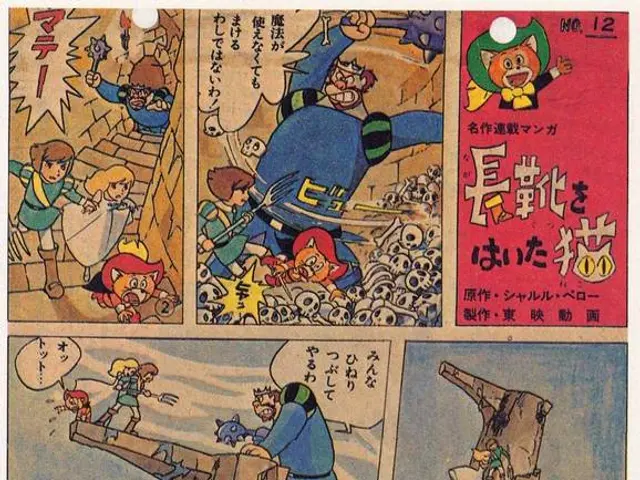Ancient Papyrus Unveils Engrossing Story of Roman Tax Deception and Counterfeiting (1900 years old)
In 2014, a remarkable discovery was made in the Judaean Desert. A researcher unearthed a papyrus scroll that initially seemed to be Nabataean, but upon closer inspection, it turned out to be Greek. This finding was nothing short of extraordinary as it revealed the longest Greek papyrus ever discovered in the area. The researchers, from Austria and Israel, began the arduous task of translating the scroll, and what they uncovered was a judicial hearing from the early second century CE involving two men accused of various crimes.
Hannah Cotton Paltiel, who rediscovered the scroll, expressed her excitement in a Hebrew University of Jerusalem statement. She explained that the papyrus, now named "P. Cotton," provided unique insights into a Roman trial that dealt with tax fraud, forgery, and the fraudulent sale and freeing of enslaved people. This case took place during a period of tension in the Roman province of Judaea.
Avner Ecker, another co-author from the Hebrew University of Jerusalem, declared that this was the best-documented Roman court case from Iudaea apart from the trial of Jesus. The papyrus included more than 133 lines of text, offering an unprecedented glimpse into trial preparations and the workings of Roman provincial administration and jurisdiction in the Near East.
The primary defendants in this case were Saulos and Gadalias, both accused of corruption. Saulos was accused of coordinating the fraudulent sale and emancipation of enslaved people without paying necessary taxes. His accomplice, Gadalias, was the son of a notary with a criminal history involving violence, extortion, counterfeiting, and inciting rebellion. Both were also accused of forging documents.
Forgery and tax fraud carried severe penalties under Roman law, including hard labor or even capital punishment. Gadalia and Saulos were also implicated in rebellious activities during Emperor Hadrian’s visit, which took place around 129 CE. The judicial hearing occurred on the eve of the Bar Kokhba revolt (132-136 CE), a Jewish rebellion against Roman rule in Judaea.
While we may never know the ultimate fate of Saulos and Gadalias, the P. Cotton papyrus offers a rare glimpse into the legal proceedings of the Greek-speaking Roman Near East. It captures a tense period between rebellious upheavals and the perennial bad attitude towards taxes, a common human frustration for thousands of years.
Incorporating enrichment data, this Roman trial unfolds as a fascinating case study of forgery, tax evasion, and slave trafficking in the Roman provinces of Judea and Arabia. The defendants, Saulos and Gadalias, are accused of orchestrating the fictitious sale and release of slaves without paying the required taxes, a severe offense under Roman law. Their criminal backgrounds, Gadalias' violent history and Saulos' involvement in the fraud, are referred to in the enrichment data.
The trial context presents a significant historical chapter during a period of significant unrest, following the Jewish Diaspora Revolt (115-117 CE) and before the Bar Kokhba Revolt (132-136 CE). This trial may have taken place during Emperor Hadrian’s visit to the region around 129/130 CE, with Tineius Rufus, the governor of Judea at that time, overseeing the trial. Roman law, Greek rhetoric, and Jewish life intersected during this period, as suggested by the enrichment data.
The legal penalties associated with forgery and tax fraud were severe under Roman law, including hard labor or even capital punishment. The detailed documentation of this trial offers a unique insight into trial preparations and the workings of Roman provincial administration and jurisdiction in the Near East, highlighting the empire’s ability to exercise legal control in remote regions. (Enrichment data)
The enrichment data also suggests that the nature of the crime raises questions about the origins of the enslaved individuals, potentially involving illicit human trafficking or the Jewish biblical duty to redeem enslaved Jews. However, freeing slaves does not appear to be a profitable business model, as noted by Dr. Ecker. Furthermore, the defendants were implicated in rebellious activities during Emperor Hadrian’s visit, though it is unclear if they were indeed involved in rebellion, shedding light on the charged atmosphere of the time. (Enrichment data)
In conclusion, the P. Cotton papyrus offers a comprehensive snapshot of Roman legal practices and the complex cultural dynamics of the region during a period of significant unrest. Despite its detailed documentation, the outcome of the trial remains unknown, possibly due to the interruption caused by the Bar Kokhba Revolt.
In the future, this discovery and its analysis could significantly contribute to our understanding of Roman law and administrative practices in the Near East. Additionally, the case involving Saulos and Gadalia showcases the intersection of science and technology in archaeology, as advanced methods were used to translate and interpret the ancient Greek text.








